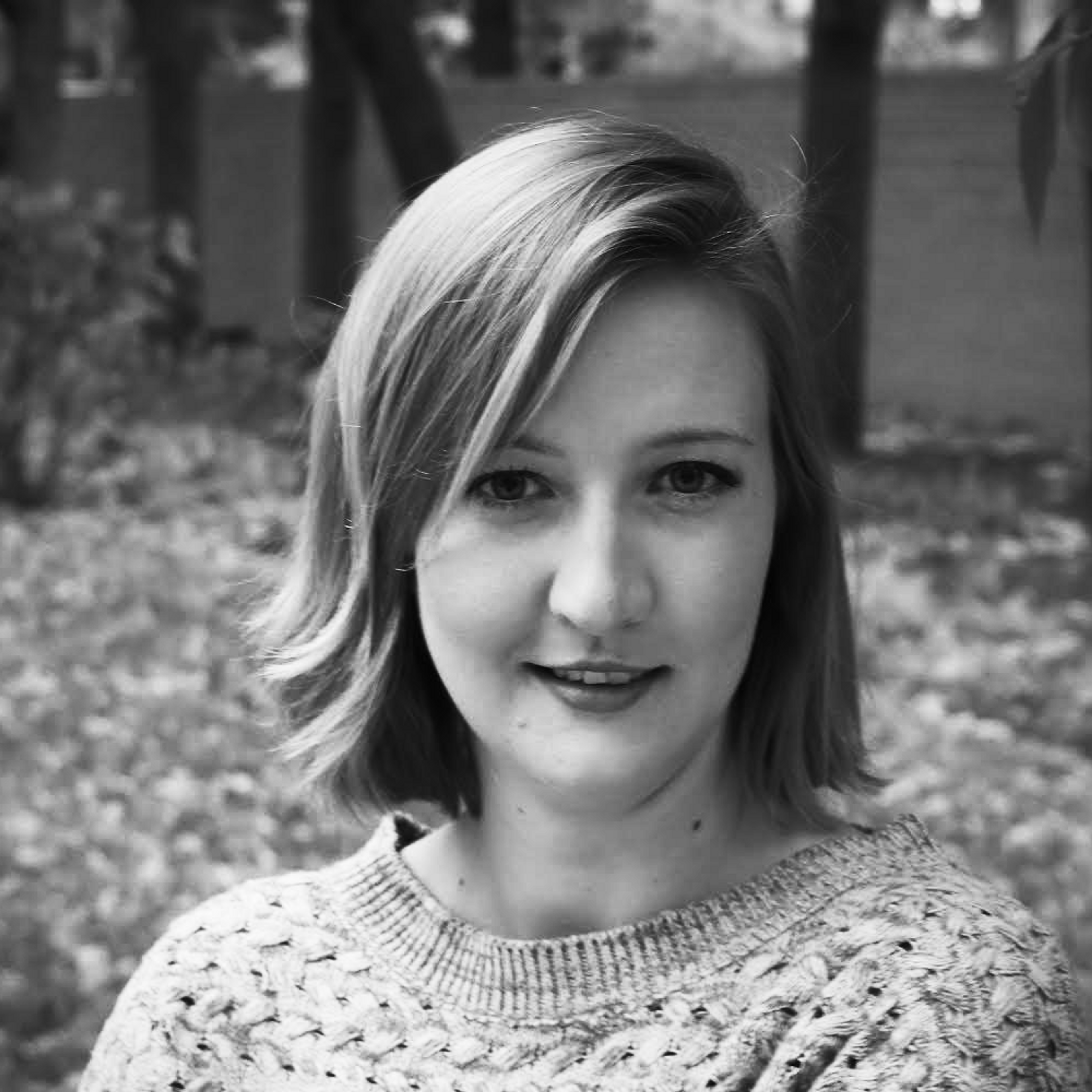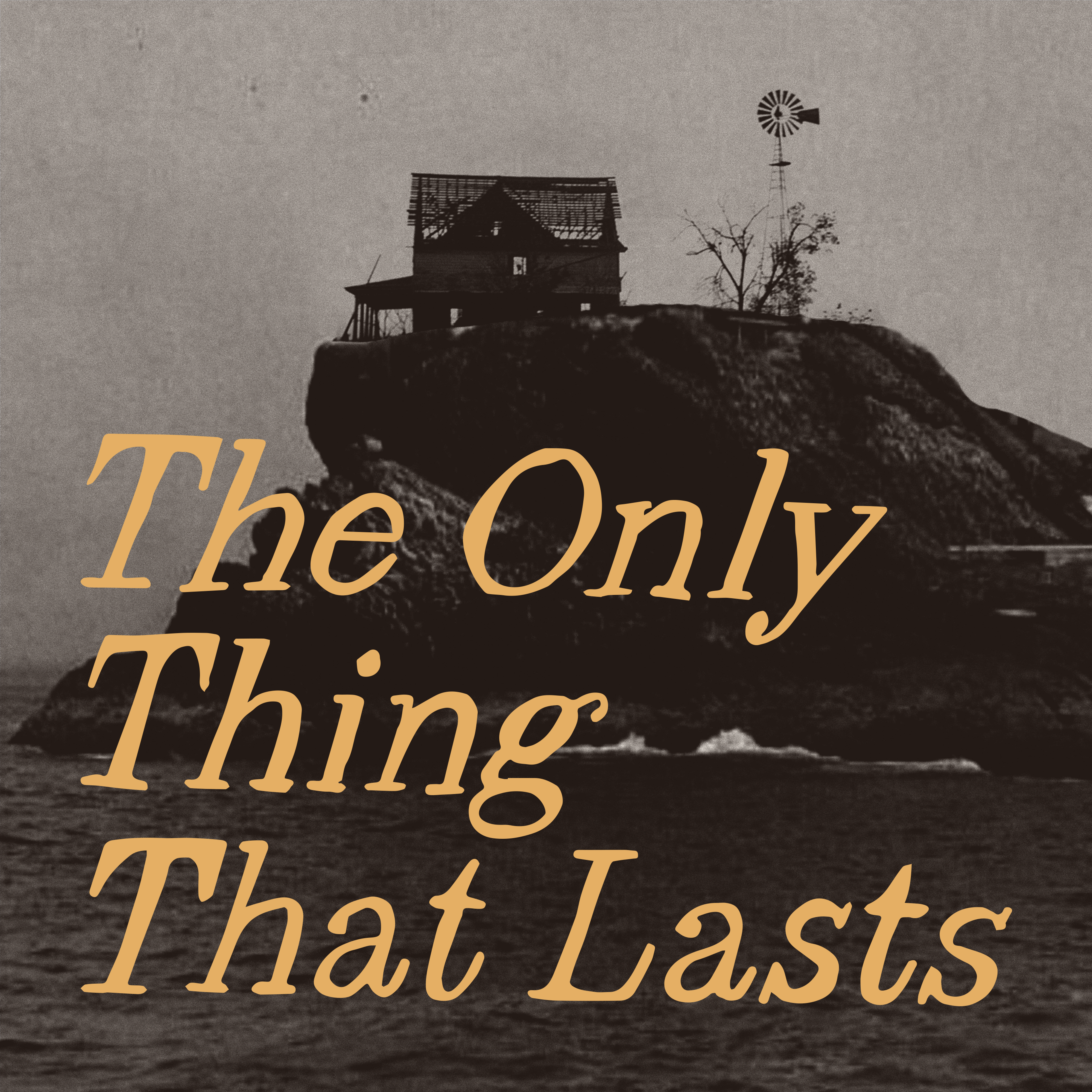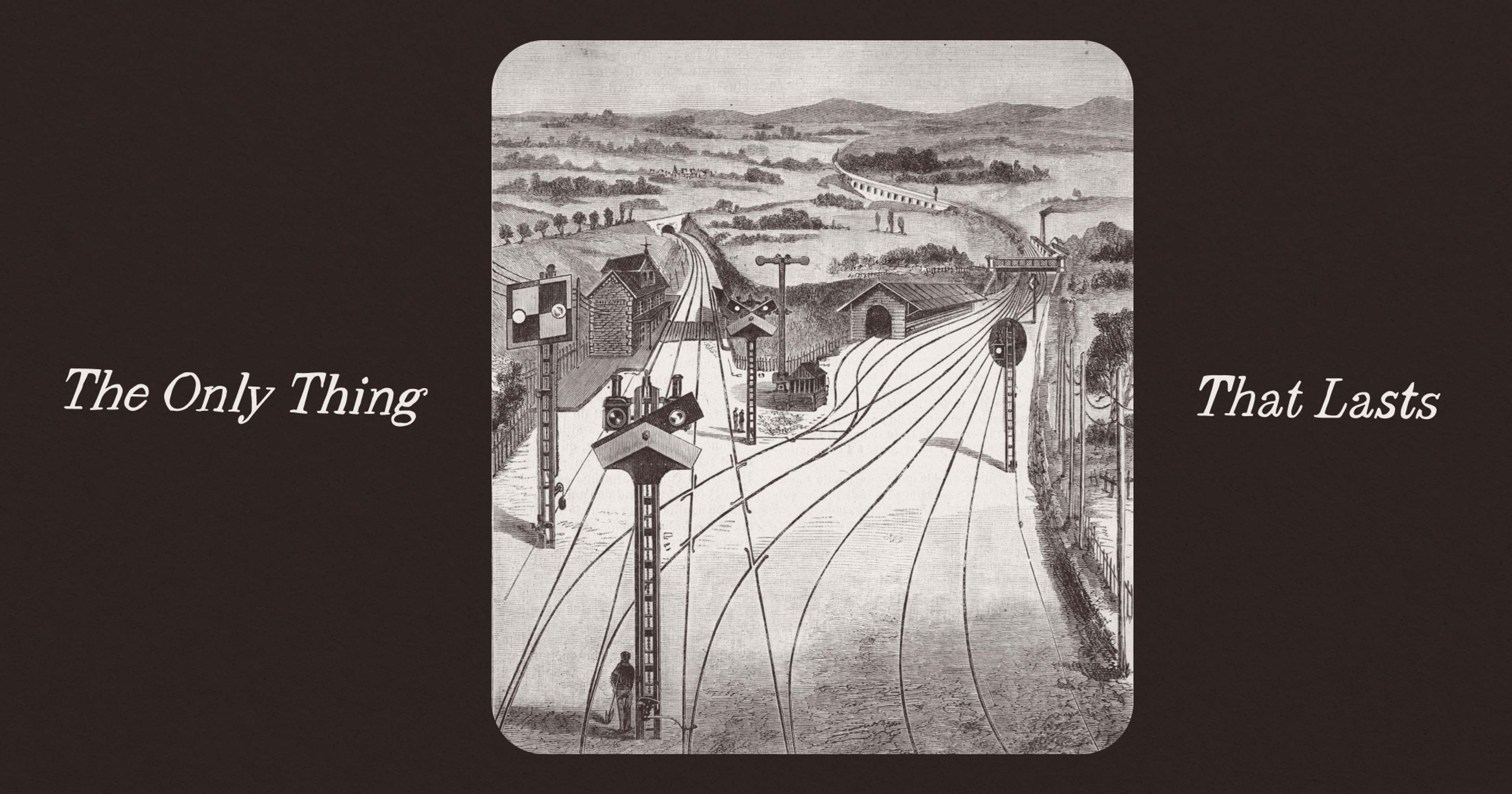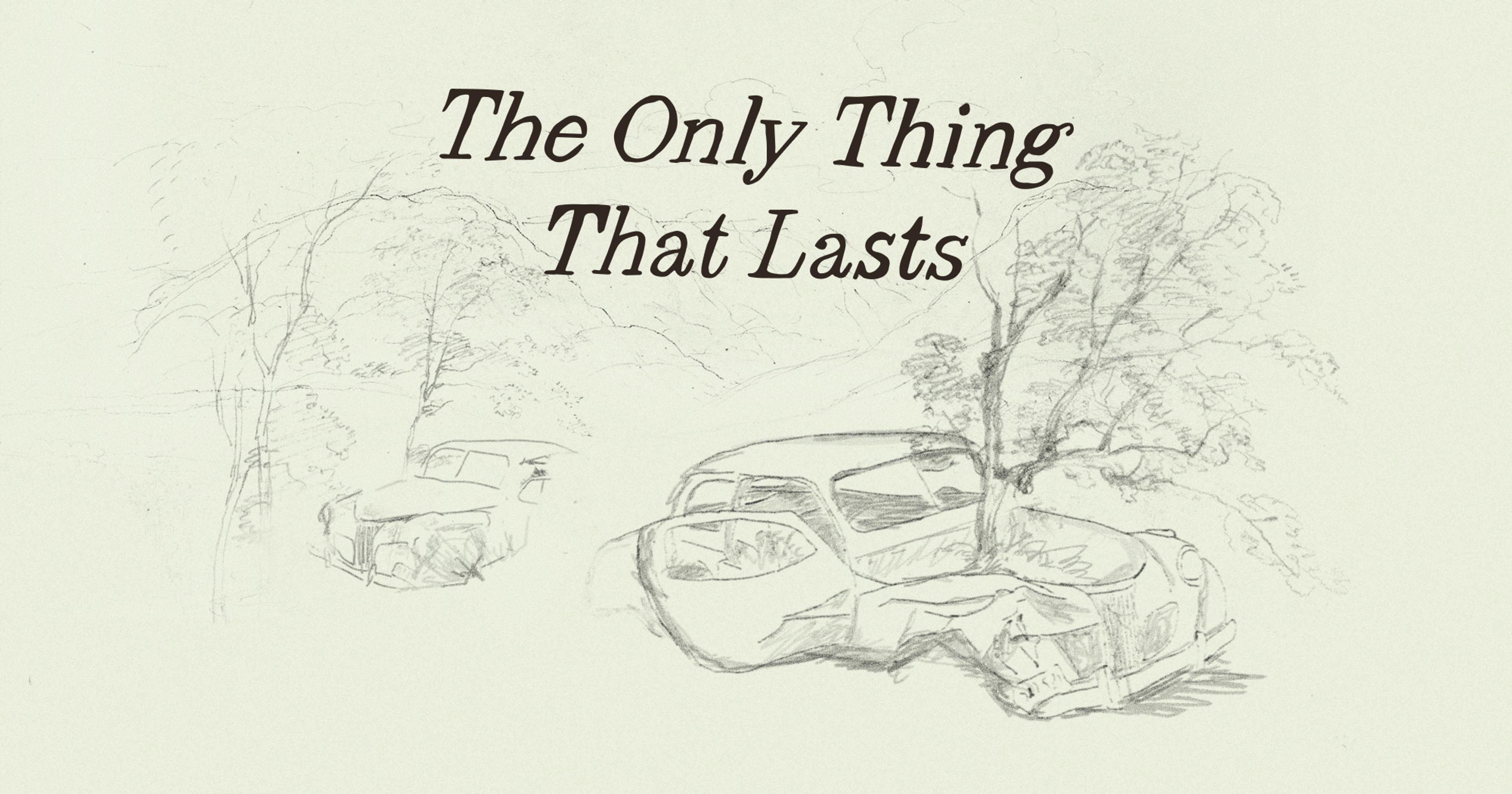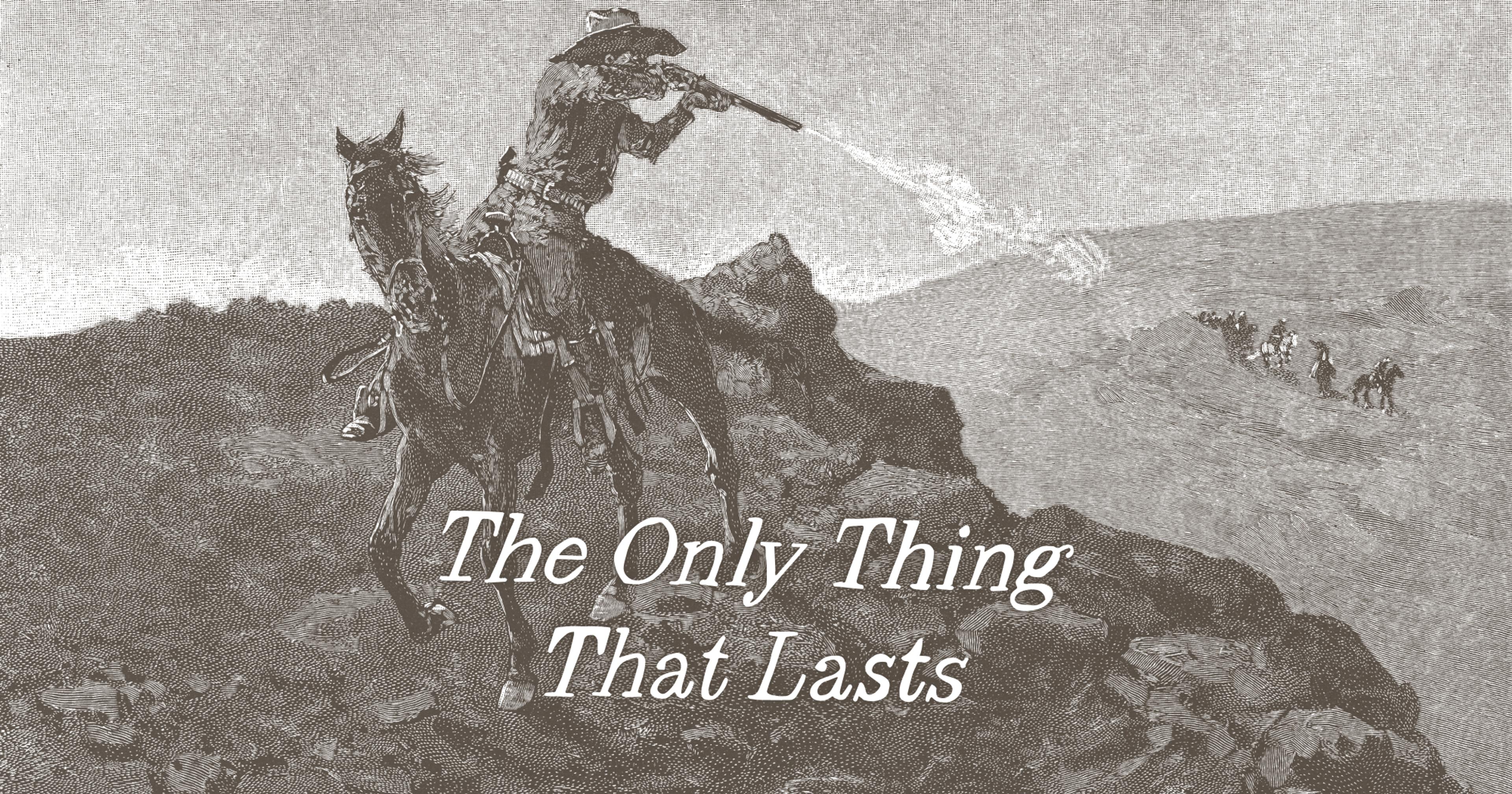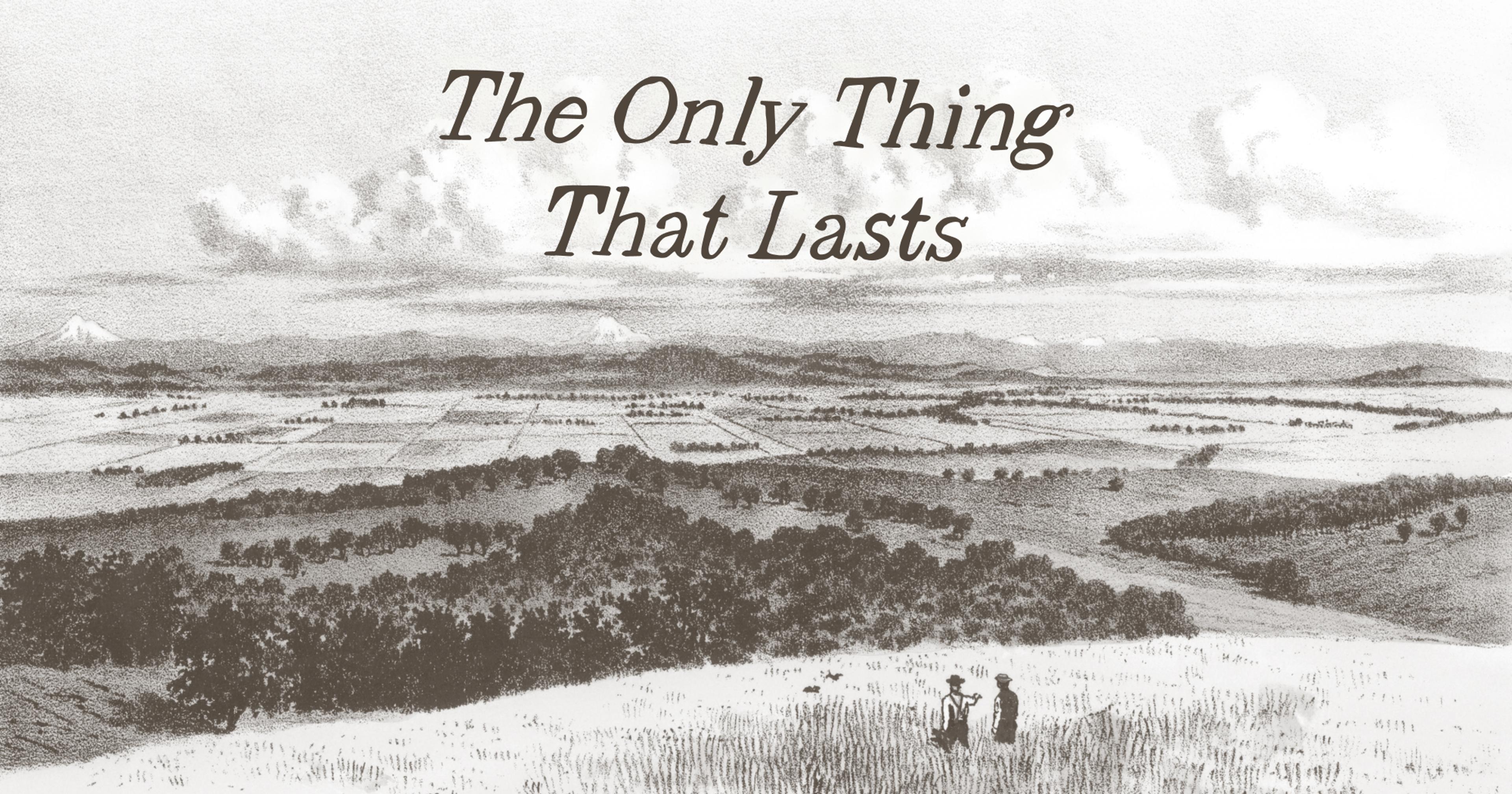And does it matter?
Subscribe on your favorite podcast app: Spotify, Apple Podcasts, Overcast, Pocket Casts, Amazon, or via our RSS feed: (https://feeds.megaphone.fm/onlythingthatlasts).
Transcript
Transcript
Sarah Mock: One occupational hazard of being an agricultural reporter is that from time to time people at parties want to talk to me about Bill Gates. It’s not always Bill Gates — he just got a lot of traction in the last couple years when he became the largest private owner of farmland in the U.S. This story was a rare farm-related bit of news that broke out of the ag world, or really, the real estate world, and into the mainstream. It was covered everywhere from the AP and Fox News to Popular Mechanics. That’s how the question, “So what do you think about Bill Gates buying all the farmland?” has become the kind of question that strangers ask to impress — asking it says, “Hey, I know a thing about your thing.”
The funny thing about that question is that the billionaire of it all doesn’t seem that interesting to me. Don’t get me wrong, I see the conspiracy theory appeal. That Bill Gates could somehow parlay his ownership of farmland into dictatorial control of the U.S. food supply, has a certain sci-fi je ne sais quoi. The reality is, Bill Gates might own the most farmland, but he’s nowhere near owning most farmland, let alone having meaningful control over whether or not you or I get to eat tomorrow.
The more interesting thing about the “who owns the farmland” question to me is why we’re all so interested in it in the first place. It seems to resonate even with people who’d probably say ‘I don’t know anything about farming’. There’s something intuitively compelling, and worrying, about farmland and I wanted to put my finger on what that is.
So when I went to a party recently, I took my trusty recorder, and rather than awaiting the inevitable mention of a certain Microsoft founder, I asked people what they know — or think — about farmland. I’ll note, this was a food and ag party — hosted by Ambrook, actually — so no retirement bashes or bridal showers were ruined in the making of this podcast.
Anyway, here’s Landon, who distilled a lot of what I heard:
Landon: Something that so many people want a little slice of, um, whether they know how to get it or not. Think just… an idealization of, man, I just want a house and a couple acres, like, away from the hustle and bustle... having land and being able to take care of yourself or your family and get your hands dirty, is a deep yearning that many people probably couldn’t even put their thumb on but it is there.
SM: I’ve felt this yearning. I grew up on a farm in Wyoming and since I left have spent a lot of my time, professionally and otherwise, pinning down what these kinds of feelings mean for myself and for the wider decisions that determine how we’ve built, and continue to build, our food system.
I’ve been reporting on farms and farmland for the better part of a decade, having worked variously as an award-winning TV, radio, and print reporter, covering everything from ag policy on Capitol Hill to the state of the farm financial system and the history of commercial chicken breeds. I’ve dug my hands into the top layer of the land on farms across the country, and written two books about my experiences doing it.
All of that has brought me here — to a hunger to dig deeper than the people, animals, plants and soil that make a farm — to learn more about the land that’s underneath it all. And not just as a type of real estate or as a given to farm production. Because farmland, I’ve discovered, is so much more than that. In fact, it’s played a hidden role in everything from public school budgets to the price of rent, from the safety of city water to the structure of insurance policies.
That’s what we’re going to do here.
We’ll hear stories about American farmland past, present and future to understand what it is, what it does, and how it quietly but irrevocably shapes our nation. And most importantly, we’ll learn how farmland impacts your life right now.
This is The Only Thing That Lasts — where we’re unraveling the mysteries of American farmland to understand its impacts on the future of America’s food, farms, and people. I’m Sarah Mock.
[INTERLUDE]
Introduction: Food & Food Security
SM: Elsewhere at the party, I heard other — perhaps more practical and immediate, answers to the question, “What do you know about farmland?”:
Sekhar: That it takes up a lot of our country, and uses a lot of water, but it also supplies our food supply, and is a great asset of the United States.
Jaclyn: So, there seems to be a big disconnect where it’s like everyone needs to eat, but no one seems to be really thinking about how like producing what we need to eat is becoming more and more risky.
Robert: I mean, the soundbite, is this like farms? They grow all the food there. Yeah. So “No Farms, No Food” — I think we’ve got the fridge magnet.
SM: That was Sekhar, Jaclyn, and Robert respectively. All three of these folks (and most others I spoke too), mainly think of farmland as the place where food is grown. They’re not alone in this, nor in their concern that risks to farmlands — Sekhar mentioned water, Jaclyn noted soil erosion — are existential not because we yearn for farmland, but because we need to eat, and farms and farmland are where food comes from.
Because I heard so much about eating — I wanted to start our journey here, with understanding the relationship between our food and farmland. But this is an essential starting point for another reason too. In my experience, “everybody eats” is an insanely powerful card to play and it gets played a lot in the toughest conversations about our food and farm system. History has shown that people — Americans included — have justified a lot of costs and accepted a lot of crummy outcomes because it’s worth it to keep food on tables and groceries in stores. In other words– there’s no point discussing and debating about byproducts of farmland if the main outcome — feeding the country — can justify just about anything. So we’ll aim to determine how directly the U.S.’s farm ground and our nation’s food security are related, and what that means about what our future might look like.
In the wake of the early pandemic, I think it’s easier for us to imagine things like empty grocery store shelves and how rising food prices can eat into a family budget. And considering what we heard from our party friends — about water, about risk, about the idea of “No Farms, No Food,” it’s not as hard to imagine that in the future, a similar situation might arise because something bad is happening to our farmland. But I’ve found the relationship between farmland and food is far less one-to-one than we think. The idea that U.S. farmland and U.S. food are one and the same… It’s kind of a myth. Or at the very least, it’s way more complicated than it seems.
But I’m getting ahead of myself.
Before I could tackle the questions about food and food security, I needed to understand what, exactly, is going on with U.S. farmland right now. So I turned to the very organization that made Robert’s “No Farms, No Food” fridge magnet — a group called the American Farmland Trust.
Part 1: American Farmland Trust
John Piotti: Without an abundant supply of farmland and ranchland, and without a thriving community of farmers and ranchers who are deeply committed to improving that land, feeding our communities, and our nation. Without all these things, our future is dim. Jobs, schools, and houses of worship will leave rural communities, we will not be able to clean up our water, we will not be able to combat climate change, and we will be in much worse shape the next time our food system is sideswiped by a pandemic or a drought or a recession or a heatwave.”
SM: That’s John Piotti, the President of American Farmland Trust, or AFT. That’s a snippet from the release of one of the organization’s flagship studies in 2020 — one that involved tracking farmland loss in the U.S.
AFT has been around since 1969, and since its founding it’s been sounding the alarm on farmland loss — which you can define pretty simply as “starting to use farmland for something that’s not a farm” for roads, stripmalls, you name it. Over the decades, AFT has helped shape ag policy across the country, from the national level all the way down to local ones .
The 2020 AFT report had a surprising claim in it: that millions of acres of farmland have been lost in the last decade and a half alone. Here’s John Piotti again:
John Piotti: Our analysis shows that between 2001 and 2016, 11 million acres of the nation’s irreplaceable agricultural land was lost or compromised. That’s equivalent to all the land in the U.S. that was used to produce fruit, vegetables and nuts in 2017.
SM: 11 million acres. That’s a lot of land. To give you a sense of just how big that figure is: an NFL football field is about 1.3 acres. Now imagine 2,000 of those, side by side, and you’ve got how much land AFT estimates the U.S. lost every single day in the first 16 years of this millennium.
That sure feels like a lot of land, and a heck of a lot of food too, especially if it’s equivalent to all the U.S. farmland growing fruits, vegetables, and nuts. It sure seems like we are making a serious gamble on our ability to feed ourselves in the long term by turning our precious farmland over to development.
But I was suspicious that this equation might be more complex than it seemed. So I sat down with the folks at AFT to understand more about this farmland we’ve lost and what it could all mean for our ability to feed ourselves in the future.
Sam Smidt: My name is Sam Smidt. Uh, my title at American Farmland Trust is, uh, National Director of Land Use and Protection Research.
SM: Sam lives in Gainesville, Florida and in his neck of the woods, he has a front row seat to many different kinds of farmland loss.
SS: The one that’s easiest just to conceptualize is urbanization. So as cities grow, they sprawl. And as they sprawl, they generally consume farmland. And what we mean by consumption of farmland is farmlands get sold, to developers, for example, and they turn into, um, to urban areas. There’s also other ways, um, in Florida in particular, for example, where I’m from, we have hurricanes. Hurricanes can wipe out, um, farms. So there’s, there’s natural threats. There’s things like sea level rise. Um, we also have, uh, like in our orchard citrus greening disease, there’s natural pressures, pests, things that can wipe out farms. And so it’s not just a development threat, but there’s, you know, environmental threats too. And so all of those things factor into, um, pressure on how our farms currently operate.
SM: So there’s urban sprawl, there’s destructive climate impacts, and there’s other types of development like alternative energy. With all of those pressures weighing on US farmland, how close are we to losing it all?
SS: One of the things that is, I think, important to communicate in the farmland loss story is the U. S. has a ton of farmland. Um, when you look at, you know, what percentage of the country is made up of farmland, it’s massive. And when we talk about what percentage of that farmland is being consumed by urban sprawl, for example, it’s very small.
SM: There Sam is right — that 11 million acres lost? That only represents about 1% of total U.S. agricultural land. Most of America, in other words, is still farm or ranch land.
What’s more, research shows the total area of U.S. agricultural land has only declined by about 50,000 acres in the last 22 years. Why the discrepancy? It’s because in many cases, farmers or other landowners have access to land in non-agricultural uses– forests, ponds, wetlands, and grassland– that can be transitioned to agricultural use.
So the answer is, we’re not at all close to running out of farmland overall, but that doesn’t mean there’s nothing to worry about. The simple fact is, not all farmland is created equal. Sam explained it like this:
SS: So soils build up over thousands of years. They’re not something that we necessarily can view as renewable. Some soils grow crops better than others. For example, all farmland is important, but some soils are more optimal for crop production. And if we lose those soils, we don’t get them back. And so the idea of having this nationally significant lands, really what we’re showing is that these are the soils that are most suitable for the future of agriculture, when it comes to say crop production.
SM: These lands are the ones AFT is most worried about, because these acres have the most productive soils, best suited to feeding the nation for years to come.
They also worry because, when this land is developed, farming is sometimes pushed elsewhere. To land that’s less productive, versatile, and resilient, and where farmers face higher costs, lower crop yields, and more economic risk. Not to mention the fact that sprawling developed land emits many times more carbon than farmed land.
But it still wasn’t clear to me what exactly all of this means for America’s food security, for the food available in our grocery stores today, and what might or might not be there in the future. I was surprised to hear that the impact all that farmland loss has had on our food system is. Essentially none. Sam explains:
SS: Food is a very small footprint in our overall agricultural landscape, and I don’t think people necessarily track that. And so, agriculture plays into lots of other aspects of our daily life, more than just food.
SM: This idea — that U.S. farmland is about “more than just food” is a bit of an understatement really. Consider that all U.S. fruits, vegetables, and nuts are grown on about 11 million acres, snd at the same time, we grow 200 million acres of corn and soybeans, almost none of which go directly to human consumption.
In addition to corn and soybeans for feed and fuel, U.S. farmers also grow fiber, like cotton and hemp. They grow trees for paper and for celebrating Christmas. They grow all kinds of plants — an even some animals (hello, horses), that have nothing to do with the food we eat.
As it turns out, food production takes up way less space than all these other uses.
[INTERLUDE]
After hearing from AFT, I felt like I had a much clearer picture of the actual relationship between U.S. farmland and the food we eat. We learned that America is mostly farmland. And though we’ve lost some, for a bunch of different reasons, we still have plenty left, enough that we use most of it for non-food purposes.
Yet I still couldn’t kick this nagging sense of worry. Worrying about farmland loss has a familiar logic to it as well. Who doesn’t have an older relative (or the lived experience) of remembering when some area — on the way to the beach or the mountains maybe, used to be all farmland, but now is all built up? When we pair that anecdotal evidence with the idea that the U.S. population is growing — that increasing numbers of people are depending on a decreasing amount of food production — that certainly seems alarm-worthy.
One so resonant that even the casually farm-curious at a party are familiar, that despite we’ve learned, that farmland is still fundamentally at risk, and there’s still some existential vulnerability lurking in our farm system. One that, as Jaclyn worried, “no really one seems to be thinking about.”
So where does this angst come from, and what is it trying to tell us about the future of our food system? That’s after the break.
[BREAK]
Now, back to the show.
Part 2: Why all the farmland angst?
SM: When I went looking for help understanding the farmland angst, it was Bruce Sherrick, a professor at the University of Illinois Urbana-Champaign and the Director of the TIAA Center for Farmland Research, whose perspective lit up the issue for me. He did this by introducing the possibility that our collective angst about farmland might not be about the specific loss or quality of farmland at all.
Bruce Sherrick: The land disappearance for things like building subdivisions or putting in a wind turbine, which really doesn’t disturb that much land. It’s a very tiny fraction ... It’s a really important question about the relationship between an individual and their property rights.
SM: This idea — that the question of farmland loss is essentially a question about the rights associated with private property, had not really come up in any of my conversations with farmland preservationists. Which is wild, because the fact that most farmland in the U.S. is private property, and most of it is owned by individuals or families, is an essential part of this whole discussion.
It’s one thing to be worried about public property, or the distribution of collective resources, and how it relates to something — like food — that’s important to everyone. But “U.S. farmland” is not some public good in public hands, which the general public can make decisions about. Which means whatever the public costs or benefits of farmland might be, it is individual landowners who have the final say over their land.
But when you’re not looking right at it, I think it’s actually easy to lose track of this fact. For example, imagining a farmer who say, owns a swath of resilient, productive farmland. I think it’s easy to assume that well, obviously that farmland should remain in farming. And surely that’s something that everyone is on board with, not least the farmer themself.
But in reality, the farmer or landowner is often not onboard with that idea at all. Because an individual or family’s top priority isn’t usually stuff like “national well-being” or “food security.” A farmland sellers top priority is, very likely, getting the best price. Bruce explains it like this:
BS: So if I were about to sell my house, I don’t think you’d object to me selling to whoever wanted to pay the most for it. And if it turns out they wanted pay the most for it because they wanted to paint all the interior walls sparkly pink and raise unicorns, great, we don’t really care. We separate the public impact of that from the property rights that you gave me. But for farmland, we somehow treat differently.
SM: I think the reason we treat farmland differently, is because it has a tremendous amount of public value and meaning. Because farmland is, at the broadest level, finite — and its finiteness is directly related to our national borders.
And on the other end of this finite resource is literal human hunger, a thing that is definitely not finite. And the tension created between these two things makes it incredibly angst-inducing when we’re faced with the reality of the market motivations.
BS: If my highest and best use for the land I own is to develop a subdivision, and there’s a really strong demand for housing and the people who say we need more houses. We need more houses. We need more affordable houses. And I’m building some low cost condos on the edge of the property that are going to be great for people who are just breaking into the housing market. One group is going to say that’s fantastic. And another group is going to say you’re ruining our farmland. And how we work out that exchange and where we draw the line between the public and the private interest is especially acute with farmland because we associate it with a lot of other things that tie directly to our heartstrings. So we are eliminating farmland in the U.S.
SM: This right here is the angst. It’s not just the friction between limitless hunger and a finite resource. It’s the fact that at the end of the day, we’ve left it up to the market, and really, to individuals, to decide how to manage that friction on behalf of us all.
We — the angsty public who feel the veiled threat from the No Farms, No Food magnet — actually can’t do all that much about the fact that when people sell farmland, they’re generally free to sell to whoever, to be used for whatever purpose.
The funny thing is, the transition of farmland out of production, though it’s inspired plenty of angst, has not actually led to the crises we’ve feared. In fact, total U.S. cropland peaked in 1930, and has been declining gradually ever since. And in the last 90+ years, agricultural productivity and the U.S. population have both increased significantly.
And yet, less farmland and exploding population has led to exactly zero widespread food crises. This points to the part of the U.S. ag story that’s obscured when we only look at farmland — the fact that farmers have clocked huge productivity gains that have allowed fewer farmers to feed more people on less land.
Given that efficiency, it makes sense that we’d have less land in agricultural production. And less farmland could even be a good thing. If you’ve ever appreciated the mountains and hills of New England or the peaceful woodlands of the Southeast and mid-Atlantic — many of those were once heavily farmed, and their conversion to non-agricultural uses is something that a lot of people are into.
In another context — Silicon Valley, in the not too distant past, was mostly dominated by agricultural uses. How would our world be different today if farming had been prioritized, and the era-defining tech companies had been turned away?
I broached some of this with Bruce, the sense that we — the eating public — have a stake in U.S. farmland, a vision even, of how it could or should be used for our collective food security benefit. I was surprised that he responded with a warning, that the ways that public players interfere with markets, can sometimes lead to … less than ideal results.
BS: It’s when we get sort of overly romanticized about an outcome that then somehow costs everybody in the system more. And that ends up transferring from one group that we didn’t identify in advance, consumers usually, to somebody who’s a smaller collection of people — farmers. Sounds like a great thing we should all be able to support. You have to be very careful about what the less identifiable structures or conflicts or transfers embedded in that would be.
SM: Bruce’s point here is one that is totally counterintuitive to the average worrier about food security. He’s saying that a possible outcome of meddling in, say, the farmland market, can end up costing us, the general public, more.
One possibility — when we set aside farmland for farms, and prevent it from being used for anything else, that means less land for development. That might push up the price of everything with a geographic footprint — from houses to public utilities to small businesses.
That increase in land prices is passed on — to home buyers, to utility customers, and to patrons who frequent local businesses. In short, there’s always, always, always a tradeoff, and when we collectively decide to treat one thing, like farmland, differently, there’s always a cost. The only question is, who pays?
[Interlude]
There’s one last question, in all of this, that’s still weighing on me. Where exactly does all our food come from then? This question was also one that came up more than I expected at the party. Here’s Robert again:
Robert: They got signs all over. It’s like, well, this one is from here, and this one is from Chile, where it’s summertime and it’s wintertime here, so they can grow berries there right now. Sometimes it’s like, oh, yeah, I guess they can’t grow. I couldn’t grow a tomato in this weather. It’s cold. So someone’s growing up, I guess.
Justin: I have this perception that, I don’t know if this is actually true, but when I was a little kid. My mom would not let us get certain fruit unless it was like, in season. Not as like a rule, but it’s just, the peaches are bad now because they’re not in season. And I feel like that’s not a thing anymore. Which seems bad. Like I can get strawberries all the time, which seems false. Like I, there should be seasons to these things.
SM: That second voice was Justin, and between these two, they’re actually doing a pretty good job getting at the answer to, “where exactly our food comes from.” Because though plenty of it does come from American farmland, depending on the season, your geography, annual conditions, and other factors.
And plenty of our food also comes from — everywhere else in the world. Overseas imports are a huge part of the US food system, and they have essentially nothing to do with farmland here in America. A case in point, USDA data shows that the amount of U.S. land used in fruit and vegetable production is actively falling. But grocery stores are rarely out of tomatoes or strawberries or anything else, because imported produce offsets essentially all of the decline.
The world of food purchasing — for fresh foods but also for ingredients to make stuff like canned soup and cereal, is insanely complex. One day the grapes are coming from California, the next from Mexico. One week organic oats in the granola were sourced from Nebraska, the next from Eastern Europe, and on and on. Purchasers at grocery chains and wholesale food companies are navigating these changes and relationships constantly, and they are just one link in a complex value chain.
The relevant answer about where our food comes from then is that our diets are not dependent on U.S. farmland alone. We don’t produce all our own food because we don’t have to, and because we like eating things that grow better elsewhere, and at times of year we otherwise couldn’t have them. That’s why empty shelves at the grocery store or climbing food prices are far more likely to result from a falling out with a global neighbor than farmland loss.
And if you’re still wondering (like me), if something were to happen and we had to grow all our food domestically, would we be able to — as far as I can tell, the answer is both yes and no. Yes, there is enough farmland in the U.S. to grow enough calories to feed our population. However, making this switch would likely require radical transformation of our diets, our farm systems, or both.
So if we’ve determined that the farmland equals food equation is way less direct, then the “No Farms, No Food” magnet implies, where does that leave us? Well, I’d argue that we challenged the given wisdom today, and in doing so, called the bluff of agriculture’s ultimate trump card.
We learned that all farmland is not equally vital, that every acre is actually not essential to stave off future famines, and that we actually can discuss and debate how farmland is used, how it impacts nearby landscapes, who owns it and who doesn’t, and more, without being silenced by the claim that “whatever we do on farmland is right, good, and necessary, because everybody eats.”
These tough discussions are what we’re tackling for the rest of this season, as we look beyond the food-farms paradigm to the more subtle, and if I do say so myself, interesting ways that farmland affects all of us — farmers and non-farmers alike — in our daily lives.
[Interlude]
Conclusion
I think the best place to start tackling the deeper questions about farmland is figuring out a question that has sat in the corner of my mind throughout this “are we losing farmland” discussion. Because even the idea of farmland scarcity is weird because it’s an extraordinary about-face from the last 500 years of North America history.
Much of the last 200 years, in fact, has been defined by how abundant, cheap, and accessible agricultural land is in North America– at least to some people. So abundant, in fact, that the government was still giving it away as recently as the 1980s.
So what happened? How did we go from being the country of near infinite land wealth to the country counting every acre that gets built on? For that answer, we’ll have to step back in time to the era when people began cultivating America, and then when working the land, in a process of economic alchemy, unlocked the secrets of property.
Or as agricultural geographer William Doolittle told me:
William Doolittle: Farmland doesn’t exist until it’s made.
SM: How we make farmland, and how farmland made America — that’s next time, on The Only Thing That Lasts.
Sign Off
The Only Thing That Lasts is an Ambrook Research production. This podcast is written, produced, and mixed by me, Sarah Mock. Our editor is Jesse Hirsch, with support by Ali Aas and Bijan Stephen. Technical Support by Dan Schlosser, and general support by Mackenzie Burnett and the whole team at Ambrook.
A final note, Ambrook Research, the media outlet that produced this podcast, is 100% editorially independent from Ambrook, the fintech company that funds it.
